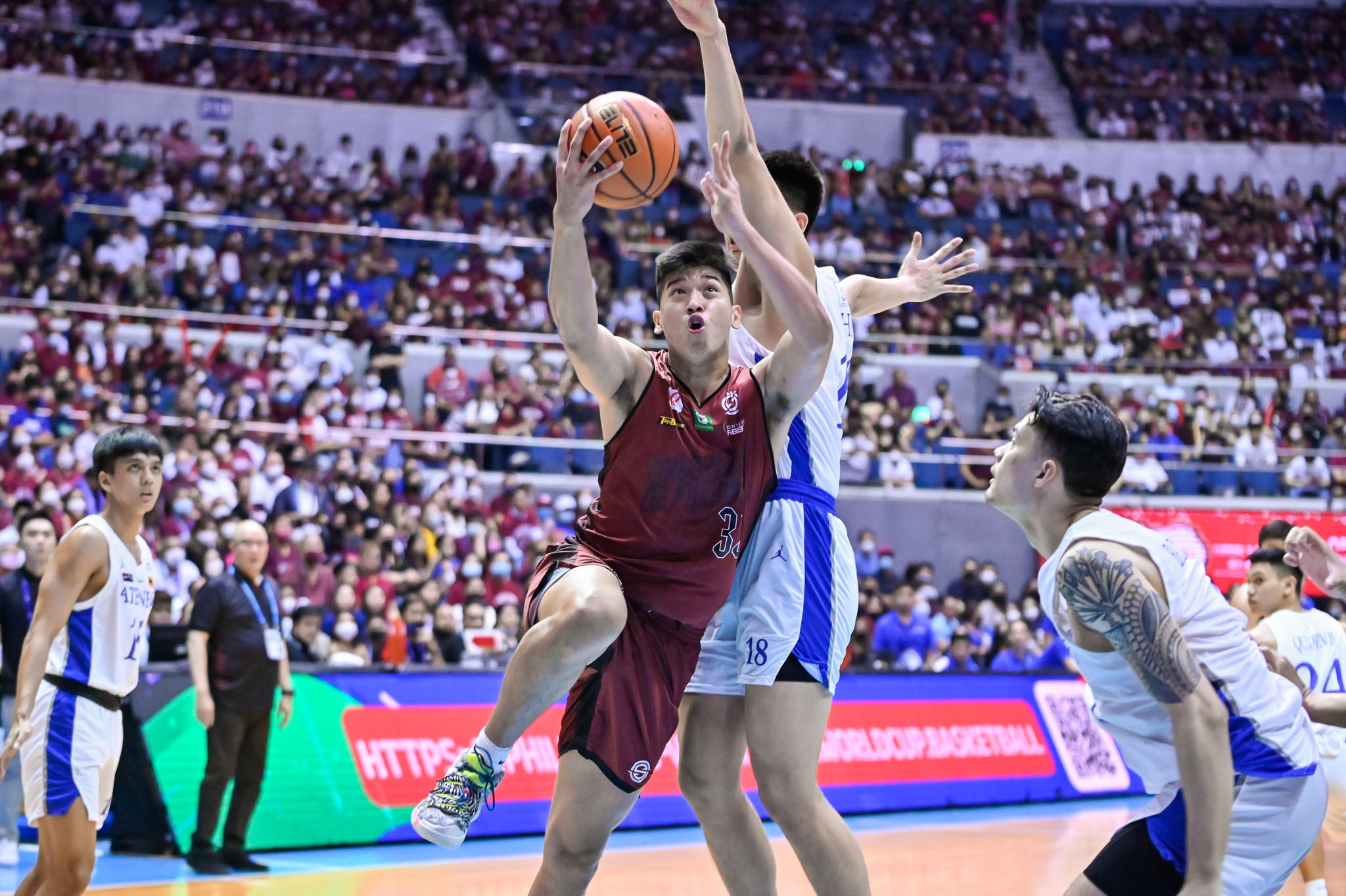
UP Fighting Maroons’ Carl Tamayo could be Korea bound. —UAAP PHOTO
Philippine Basketball Association (PBA) commissioner Willie Marcial admitted that the continuing migration of several big-name players to neighboring leagues overseas is something that he and the league cannot prevent.
But that doesn’t mean Marcial and the PBA would admit feeling the effects of the exodus, which heightened in 2022 following the big leap collegiate and professional cagers took for much greener pastures in Japan and South Korea.
“Honestly, no,” Marcial said in Filipino in response to the Inquirer’s question on one of the biggest topics in the local basketball scene in the year that passed. “If they feel that it’s going to be good for their careers, then we won’t stop them from doing so.”
Japan’s B.League once again welcomed new names to join the likes of Kiefer and Thirdy Ravena, Ray Parks Jr. and Dwight Ramos when Phoenix’s Matthew Wright, NorthPort’s Greg Slaughter and Terrafirma’s Roosevelt Adams went to the Land of the Rising Sun for mega-buck deals.
But the decision of South Korea’s Korean Basketball League to follow the B.League’s lead of allowing its teams to sign Asian players has resulted in the arrival of the likes of Rhenz Abando, RJ Abarrientos and SJ Belangel—blue chip collegiate talents who would have been marquee PBA names in the future.
Next departees?
They would surely be first round picks in the PBA Rookie Draft in any year. But players these days have more options compared to recent times, and they would rather take a chance at the opportunity than not try at all.
One player did return after a one-year stint in the B.League when Javi Gomez de Liaño was taken eighth overall by Barangay Ginebra in the draft before being shipped to Terrafirma in exchange for No. 2 selection Jeremiah Gray.
University of the Philippines’ Carl Tamayo, Adamson’s Jerom Lastimosa and even NorthPort’s Robert Bolick are being speculated as among the next to join the current crop of overseas-playing Filipinos.
This, despite measures—albeit viewed by some fans as draconian—of a five-year window that gives those who went overseas a chance to eventually head back home.
The migration may be considered as one of the factors as to why games, except those of popular teams like Barangay Ginebra, San Miguel Beer and Magnolia, are played before near-empty arenas.
Marcial, however, would like to believe otherwise.
“If you notice, even if some of the notable names are no longer around, we still enjoy good crowds and good [TV] ratings,” Marcial said.
But PBA chair Ricky Vargas once admitted that the “poaching of players” is affecting not just the league, but also the Gilas Pilipinas program, though the Ravenas, Parks and Ramos were among the fixtures in Fiba (International Basketball Federation) World Cup qualifying windows and continental tournaments despite their B.League commitments.
“The keyword is cooperation. If we continue this way of engaging Philippine players without prior clearance from our league, it may sadly blemish our friendship,” Vargas said when the PBA held talks with the B.League in September, prompting a negative response from the outspoken Slaughter.
The thought of being a pro cager abroad instead of being one in the PBA will remain in 2023. But for Marcial, he’s keeping an open door for those wanting to return home and showcase their talents in the country’s big league.

